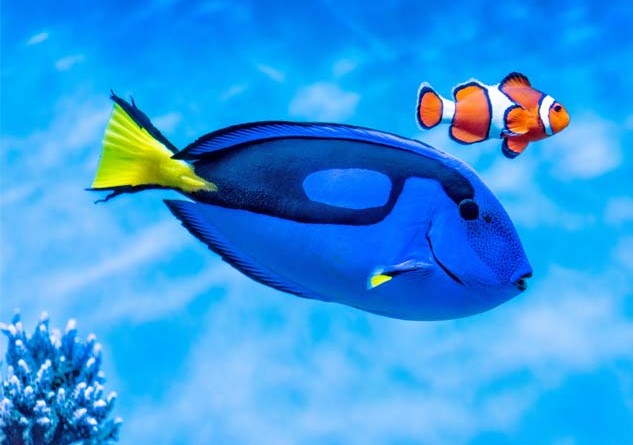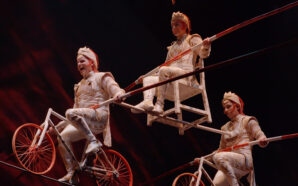Arturo Hilario / El Observador
“Finding Dory” could not have been created without the real life creatures which inhabit Monterey Bay Aquarium.
Features that are solely found in the ecosystem of the Bay Area’s coasts are essential parts of this film, which finds Dory (Ellen DeGeneres) in the midst of finding out about her own past. Now that Nemo has been found, (which was actually 13 years ago in real time), Dory holds on to a recurring feeling in her past, the idea of home. This drives her to find out about her own beginnings by heading from the Australian ocean all the way up to the Pacific coasts of California, particularly a setting in the film mirroring Monterey Bay Aquarium.
Not only does the aquarium host a marvelous assortment of exotic ocean animals, it also uses the precious ecosystem of the surrounding area to host local ocean life and recreate their natural habitats through the use of technology, and research.
Pixar came to Monterey Bay Aquarium with the intention of doing research of their own. Out of the 3 locations in the film, The Reef, Kelp Forest and Marine Life Institute, the Monterey Bay Aquarium and the surrounding coastline served as two, adding both new challenges and opportunities for the visuals of the film.
Director Andrew Stanton states, “We wanted to go to the kelp forest of underwater so badly ’cause it’s so unique. And I couldn’t ever justify it in the first movie, ’cause it just is so specific to this coastline. And so it was one of those nice things where we could make this story take place anywhere at the beginning. So we kind of planted a pin here just to see if it would hold and it held.”
The Kelp Forest is certainly unique. Located alongside the Monterey Bay Aquarium, it was picked for this film for its murky beauty, where long stalks of kelp come up through the ocean to the top of the water at times. Add in the sunlight that beams into this and you have a great visual feast. The contrast between this location and the Australian reef from the first film (which is returning in “Finding Dory” for a bit) adds a drastic departure for the characters of the original film, but one that is unique and beautiful in its own ways.
Angus MacLane co-director of “Finding Dory” recalls, “The kelp forest was incredibly complex to build in the computer—especially creating realistic water effects around the kelp—it would not have been possible in the ‘Finding Nemo’ days. But now, armed with new lighting and rendering tools, we were able to create more realistic lighting throughout the water that helped add to the forest’s believability as an environment.”
These tools include rendering and animation programs created specifically for this film, because of the need for certain tools that didn’t exist before at Pixar, or anywhere for that matter. A lot of what you will see will look amazing, but at the same time it will have the same essence as “Finding Nemo”. Animators had to match up the animation look to the first film, while still being able to add a lot more detail and enhanced water and lighting effects.
None of this could’ve have happened with the ease and access of the Monterey Bay Aquarium. Working alongside the knowledgeable staff, the Pixar tea, working on ‘Dory’ spent many hours at the aquarium, learning everything about the characters and the world’s they come from.
One of standouts of the new faces in the film is Hank the Septopus, (It is noted he lost one of his tentacles at some point in his life), who is voiced by Ed O’Neill. According to the animation team at Pixar, Hank is THE hardest character they have ever had to come up with. Ever. An escape artist and great at camouflaging, the character is based on a few of the tenants at Monterey Bay Aquarium. “Tentacles: The Astounding Lives of Octopuses, Squid and Cuttlefishes”, played a big role in helping Hank come to life. A few of the real life versions of Hank, giant Pacific octopuses, spent time with the animators in order to learn how they could create them in the film. The octopuses are intelligent and playful creatures, which reflect in the way the animators finalized Hank and his movements, minus the grumpiness that Hank has in some points in the film.
Along with the giant Pacific octopuses, those attending the aquarium have the opportunity to see Dory and Nemo as well. Monterey Bay Aquarium hosts palette surgeonfish (or Dory) and anemone fish (also known as “clownfish”, or Nemo).
And so, the Pixar team learned while making “Finding Dory”, 58 million people have experienced the wonders of the world below us at the aquarium since its opening in 1984. Just a short trip away the cast of the film swims and lives for one to experience. So if time permits, the Monterey Bay Aquarium is the perfect attraction to see after watching “Finding Dory”, or if you’re curious about our nautical neighbors.
Stay tuned for another feature on “Finding Dory” as the film approaches release.
“Finding Dory” will release June 17, 2016. For more information on the real life versions of the film’s characters, visit <http://www.montereybayaquarium.org/>.






